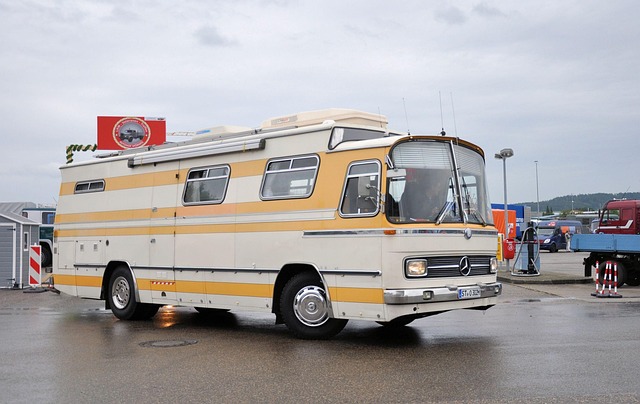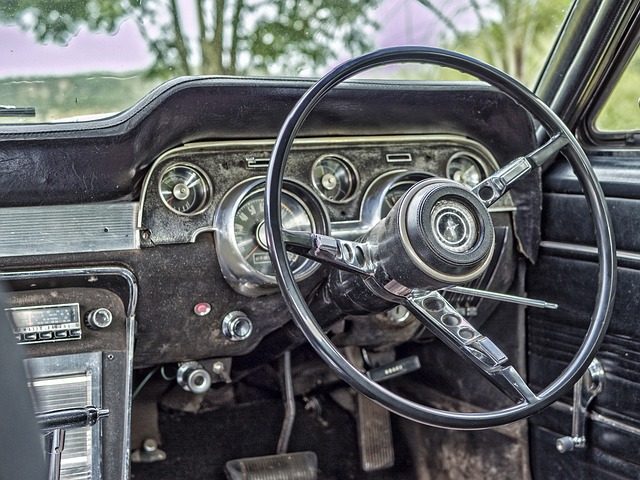Looking to register your car in California? Navigating the process can seem daunting, but with the right guidance, it’s straightforward. This comprehensive guide walks you through every step, from understanding the California vehicle registration process and gathering essential documents for VIN verification to submitting applications and paying fees. Learn how to ensure a smooth transition, covering all post-registration considerations as well.
- Understanding the California Vehicle Registration Process
- Gathering Required Documents for VIN Verification
- Performing VIN Verification: Steps and Guidelines
- Submitting Applications and Paying Fees
- Post-Registration: Important Considerations and Next Steps
Understanding the California Vehicle Registration Process

Understanding the California Vehicle Registration Process is essential for a smooth transition from new car owner to registered driver. It begins with accurate and complete documentation, including proof of purchase, insurance, and identification. The core step involves confirming your vehicle’s identity through a process known as VIN verification (Vehicle Identification Number). In California, this often includes submitting the necessary forms and paying the registration fees to the Department of Motor Vehicles (DMV).
One modern convenience that streamlines this process is the use of mobile VIN verification services. These services offer a convenient and efficient way to complete your VIN inspection, allowing you to verify your vehicle’s details remotely. This option is particularly appealing for those who prefer not to visit a DMV office or are limited by time or mobility. By leveraging technology like mobile VIN inspectors, you can ensure that every aspect of the registration process is handled accurately and promptly.
Gathering Required Documents for VIN Verification

Before registering your car in California, it’s crucial to gather all necessary documents for a successful VIN (Vehicle Identification Number) verification process. This step is an essential part of the registration procedure and ensures that your vehicle meets all legal requirements. Firstly, you’ll need the basic paperwork, including proof of ownership, such as a title or bill of sale, and your valid driver’s license. Additionally, the California Department of Motor Vehicles (DMV) requires a current insurance card to verify your automotive liability coverage.
For a smoother process, consider having a mobile VIN verification service perform an inspection using their specialized equipment. These services, including mobile VIN inspectors or verifiers, can conveniently assess your vehicle’s history and provide instant results. This option is particularly beneficial when you’re short on time or face challenges in obtaining certain documents.
Performing VIN Verification: Steps and Guidelines

Performing VIN Verification: Steps and Guidelines
The first step in registering your car in California is to ensure that your vehicle’s Vehicle Identification Number (VIN) is legitimate and matches the information on record. This process, known as VIN verification, is crucial to prevent fraud and ensure the safety of registered vehicles. You can perform this check using a mobile vin verifier or schedule a vin inspection at an authorized location. Begin by obtaining your vehicle’s VIN from the dashboard or the title document. Then, access a reliable online database that offers free or paid VIN verification services. Input the VIN and follow the prompts to cross-reference the data with official records.
If there are any discrepancies, address them immediately. Discrepancies could indicate potential issues such as odometer rollback or unauthorized usage. Once you’ve confirmed the VIN’s authenticity, proceed with the registration process knowing that your vehicle is genuine. Remember, a mobile vin inspection can provide quick and convenient verification, making it an attractive option for busy individuals. However, ensuring accuracy remains paramount, so choose a reputable service provider to guarantee reliable results.
Submitting Applications and Paying Fees

When registering your car in California, submitting applications and paying fees is a straightforward process. First, gather all necessary documents, including proof of ownership, vehicle identification number (VIN) verification, and current registration. The state requires a VIN inspection to ensure the vehicle’s authenticity, so consider using a mobile vin verifier for convenience. This digital tool allows you to complete the VIN verification process quickly from the comfort of your home or even while you’re on the go.
After gathering all required documents, submit them along with the appropriate fee to the California Department of Motor Vehicles (DMV). The fees vary depending on the type of vehicle and any additional services, such as title transfers or duplicate licenses. Ensure you pay the correct amount to avoid delays in your registration process. A mobile vin inspection can help streamline this step by providing immediate results and peace of mind that your vehicle’s information is accurate.
Post-Registration: Important Considerations and Next Steps

After successfully registering your car in California, there are several important considerations and next steps to ensure a smooth ownership experience. One crucial step is to obtain a Vehicle Identification Number (VIN) verification. This process involves checking the authenticity of your vehicle’s VIN and ensuring it matches the data on file with the DMV. You can opt for a mobile VIN inspection or verification service, which provides convenience by allowing the check to be conducted at your location, making it an attractive option for busy individuals.
Additionally, keep in mind that responsible car ownership includes regular maintenance and inspections. Stay up-to-date with service appointments, and consider scheduling a mobile vin inspection to streamline the process. By addressing these post-registration tasks, you’ll not only maintain compliance but also ensure your vehicle remains in optimal condition.
Registering a car in California involves several steps, from understanding the process to gathering documents and completing VIN verification. By following these guidelines, you can ensure a smooth registration experience. Remember to keep your documentation organized and up-to-date, as it’s essential for future reference and vehicle ownership. Always verify the latest requirements through official channels, as regulations may change, ensuring a seamless transition to California’s vehicle registration process.



